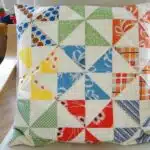As an interior design expert, I have seen firsthand the impact that the right sofa color can have on a room. The sofa is often the centerpiece of a living space and can set the tone for the entire room’s aesthetic. Choosing the right color can be overwhelming, but with some guidance and understanding of color psychology, you can make a decision that not only fits your personal style but also serves the needs of your guests.
When choosing a sofa color, it’s important to consider both practical and aesthetic factors. One of the most critical considerations is how much traffic the sofa will receive. If you have children or pets, a light-colored sofa may not be practical as it will show stains and dirt more easily. Additionally, consider whether you want your sofa to blend in with your existing decor or make a bold statement as an accent piece. By taking these factors into account and understanding how different colors can affect mood and ambiance, you’ll be well on your way to choosing the perfect sofa color for your home.
The Importance Of Choosing The Right Sofa Color
The importance of sofa color in interior design cannot be overstated. A sofa is often the centerpiece of a room and sets the tone for the entire space. The right color can tie together all the other furniture pieces and decor, while the wrong color can clash and make the room feel chaotic.
When choosing a sofa color, it’s important to consider how it will match with other furniture pieces. If you already have a lot of patterns and textures in your room, a neutral-colored sofa may be the best option to balance out the space. On the other hand, if you have a lot of solids and neutrals in your room, a bold colored sofa can add some much-needed visual interest.
To ensure that your chosen sofa color works well in your space, bring home swatches or samples and test them out in different lighting conditions throughout the day. This can help you avoid any surprises once you’ve already committed to purchasing a particular color scheme. By taking these steps to choose the right sofa color for your space, you’ll create a cohesive look that’s both inviting and stylish. Consider the amount of traffic the sofa will receive next when making this decision.
Consider The Amount Of Traffic The Sofa Will Receive
The color of a sofa can have a significant impact on the overall aesthetic of a room. However, it is also important to consider practical factors when choosing the right sofa color. In this section, we will discuss how traffic considerations and durability factors can help you make an informed decision.
When considering the amount of traffic that your sofa will receive, think about who will be using it and how often it will be used. If you have children or pets, for example, you may want to choose a darker color that can hide stains and wear-and-tear. Additionally, if your sofa will be in a high-traffic area like a living room or family room, you may want to choose a color that won’t show dirt as easily.
Durability is another important factor to consider when choosing the right sofa color. Look for materials that are easy to clean and maintain, and avoid fabrics that are prone to fading or staining over time. Additionally, consider investing in a sofa with removable covers that can be washed or replaced as needed.
To summarize, traffic considerations and durability factors should play an important role in your decision when choosing the right sofa color. By keeping these practical factors in mind along with your personal aesthetic preferences, you can find the perfect balance between style and functionality for your home.
Transition: While practicality is important when choosing the right sofa color, aesthetics should not be overlooked either. In the next section, we will explore ways to find a balance between practicality and aesthetics for your home decor needs.
Practicality Vs. Aesthetics: Finding A Balance
When selecting a sofa color, durability, cost, size, style, comfort and functionality should be taken into consideration. Additionally, the size of the room, room decor, room tone, light reflectivity and the amount of lighting available should be taken into account. Personal preference, personal style and maintenance must also be considered in order to achieve a balance between practicality and aesthetics. Ultimately, by thoughtfully assessing each of these factors, one can choose the best sofa color to suit their needs.
Durability
When choosing a sofa, it’s essential to consider its durability. Factors affecting the durability of a sofa include the type of materials used, the construction, and the quality of craftsmanship. A sofa made from high-quality materials such as hardwood frames, top-grain leather or sturdy fabrics is likely to be more durable than one made with cheaper materials. Additionally, sofas that are constructed with strong joints and reinforced corners are less likely to break down over time.
To ensure your sofa lasts for years to come, proper cleaning and maintenance are crucial. For fabric sofas, regular vacuuming will help prevent dirt and dust buildup that can cause wear and tear. Spot cleaning with a gentle detergent can also help remove stains before they become permanent. Leather sofas require special attention; avoid using harsh chemicals that can damage the material. Instead, use a soft cloth and mild soap to clean up spills immediately.
When it comes to finding a balance between practicality and aesthetics in choosing the right sofa color, durability should be at the forefront of your decision-making process. A durable sofa will not only stand up against everyday wear-and-tear but also retain its shape and color over time. By following proper cleaning and maintenance tips regularly, you can extend your sofa’s lifespan while keeping it looking good as new for longer periods.
Cost
As an interior design expert, one of the most important factors to consider when choosing a sofa is its cost. The affordability of a sofa is crucial for those who are budgeting and looking for a practical option that won’t break the bank. However, it’s essential to remember that investing in a high-quality sofa can save you money in the long run by avoiding the need for frequent replacements.
When considering cost, it’s important to not only look at the sticker price but also factor in durability and maintenance costs. A cheaper sofa may seem like a more affordable option initially, but if it’s made with lower quality materials and craftsmanship, it may require costly repairs or replacements down the line. On the other hand, investing in a more expensive, durable sofa may cost more upfront but can save you money in the long run.
Ultimately, finding a balance between cost and practicality while maintaining aesthetics is key when choosing a sofa. By carefully considering your budget and prioritizing durability and maintenance costs, you can find an affordable option that will last for years to come without sacrificing style. Remember to do your research and invest wisely to create a comfortable and beautiful living space that fits your needs and budget.
Size
When it comes to finding the perfect sofa for your living space, size is an essential factor to consider. As an interior design expert, it’s important to know the measuring requirements and fitting considerations for a sofa in order to strike a balance between practicality and aesthetics.
Firstly, it’s crucial to measure your living space and ensure that the selected sofa will fit comfortably without overwhelming the room. A sofa that is too large can make a room feel cramped and crowded, while one that is too small can look out of place and fail to provide adequate seating options. Additionally, you should consider the number of people who will be using the sofa regularly and choose a size accordingly.
Secondly, practicality should not be sacrificed for aesthetics when considering size. For instance, while a low-profile or delicate-looking sofa may appear stylish, it may not offer enough support or comfort for regular use. On the other hand, a larger-sized sectional may provide ample seating options but may not be practical if it takes up too much space in smaller rooms.
In conclusion, when dealing with size as a consideration in choosing a sofa, striking a balance between practicality and aesthetics is key. By understanding measuring requirements and fitting considerations while prioritizing comfort and functionality over style alone, you can select a suitable size that complements your living space while serving your needs effectively.
Understanding Color Psychology
Did you know that color influences up to 90% of a person’s first impression of an item or space? This means that the color of your sofa can have a significant impact on how people perceive your living room. Understanding color psychology is essential in selecting the right sofa color.
Color symbolism plays a significant role in color psychology. Different colors carry different meanings and emotions, and understanding these associations can help you choose the right sofa color for your space. For instance, blue is known to represent calmness and relaxation, while red symbolizes passion and energy. Green represents nature and harmony, while purple represents luxury and sophistication. These are just some examples of how colors can communicate certain messages about your personal style or the ambiance you want to create in your living room.
Cultural influences also play a role in color psychology. Different cultures may associate specific colors with different meanings, so it’s crucial to consider cultural connotations when choosing a sofa color. For example, in Western cultures, white represents purity and cleanliness, while in Eastern cultures, white is associated with mourning and funerals. Understanding these cultural nuances can help you select a sofa color that resonates with you while avoiding any unintended negative associations.
Understanding color psychology is key to selecting the right sofa color for your living room. Color symbolism and cultural influences are just two factors to consider when making this decision. In the next section, we will explore the impact of colors on mood and ambiance further to help you make an informed choice for your home decor.
The Impact Of Colors On Mood And Ambiance
Color has a significant impact on our mood and the ambiance of any room. Choosing the right color for your sofa can make all the difference in creating a comfortable and inviting space. Understanding color symbolism and cultural influences is essential when selecting the perfect hue.
For instance, red is known to stimulate energy, passion, and excitement, making it an ideal choice for a social living room. On the other hand, blue is calming and soothing, making it perfect for bedrooms or relaxation spaces. Green symbolizes nature and balance, while yellow represents happiness and optimism.
Cultural influences also play a role in color selection. For example, in some Asian cultures, red symbolizes good luck and prosperity, while white represents purity and peace. In contrast, Western cultures associate black with mourning or sadness. Therefore, it’s essential to consider these cultural nuances before settling on a specific color scheme for your home decor.
Transition: Now that we’ve discussed the impact of colors on mood and ambiance let’s explore how neutral colors can affect our psychology.
The Psychology Of Neutral Colors
Did you know that 80% of Americans prefer neutral colors for their home furnishings? This statistic is not surprising considering the calming effect that neutral colors have on people. Neutral colors are often associated with calmness, tranquility, and simplicity. Additionally, they can also be used as a blank canvas to incorporate pops of color through accessories such as throw pillows or artwork.
Color symbolism plays a significant role in how we perceive neutral colors. For instance, white is commonly associated with purity and cleanliness while beige represents warmth and comfort. These meanings can vary depending on cultural influences. In some cultures, white is associated with mourning and funerals instead of purity. It’s essential to consider these cultural differences when choosing furniture colors for your home.
As an interior design expert, I recommend incorporating neutral colors into your living space to create a sense of harmony and balance. Neutral colors are versatile and timeless, making them an excellent investment for any home décor style. Understanding the psychology behind color choices can help elevate your home’s aesthetic appeal and create a space that resonates with you on a personal level.
Transitioning into the subsequent section about the psychology of bold colors, it’s important to note that while neutral colors evoke a sense of calmness, bold colors can elicit strong emotions such as excitement or aggression. Understanding the psychological effects of different color schemes can help you choose the right sofa color that aligns with your desired mood and atmosphere for your living space.
The Psychology Of Bold Colors
After learning about the psychology of neutral colors, it is important to also consider the psychology of bold colors when choosing a sofa color. Bold colors can evoke different emotions and have various cultural influences. For example, red is often associated with passion, energy, and love in Western cultures, while in Eastern cultures it can represent luck and prosperity.
Color symbolism can also vary depending on personal experiences and associations. It is important to consider how a bold sofa color may make you or your guests feel in the space. Will it be energizing or overwhelming? Will it complement or clash with existing decor?
Cultural influences should also be taken into account when selecting a bold sofa color. Different cultures have unique attitudes towards color, which can affect how certain colors are perceived. It is important to research cultural meanings and associations before making a final decision on a bold sofa color. By considering both the psychology of neutral and bold colors, as well as cultural influences, you can choose the perfect sofa color that will harmonize with existing decor and create the desired atmosphere in your space.
Harmonizing With Existing Decor
When selecting a sofa color, it’s important to consider the existing decor in the room. Choosing complementary colors can help tie everything together and create a cohesive look. For example, if your walls are painted a cool blue tone, consider a warm-toned sofa like beige or brown to balance out the space. On the other hand, if your walls are a warm shade of yellow or orange, a cooler-toned sofa like gray or navy may be more appropriate.
In addition to choosing complementary colors, it’s important to balance warm and cool tones throughout the room. Too much of one type of tone can create an unbalanced and uncomfortable atmosphere. Consider incorporating both warm and cool accent pieces like throw pillows or curtains to maintain harmony in the space. Mixing metallic finishes like gold and silver can also add visual interest while maintaining balance.
Overall, harmonizing with existing decor is an essential step in choosing the right sofa color for your space. By considering complementary colors and balancing warm and cool tones throughout the room, you can create an atmosphere that is both visually pleasing and comfortable. In the next section, we will explore how creating contrast with color can further enhance your design scheme.
Creating Contrast With Color
Matching colors can be used to create a cohesive and unified look for a room. Contrasting colors can be used to create a bold and lively look for a room. Color schemes are combinations of colors that work together in a room to create a certain atmosphere. Color schemes typically include multiple colors, hues, and shades. When choosing the right sofa color, one must consider the other colors present in the room and how they work together. For example, a bright, colorful sofa could overwhelm a room filled with neutral colors. Careful thought and planning should be taken when incorporating colors into a room to create an inviting atmosphere.
Matching Colors
Color coordination plays a vital role in interior design, especially when it comes to selecting the right sofa color. Your sofa is often the centerpiece of your living room, and its color can influence the overall ambiance of your space. To achieve a harmonious look in your living room, it’s important to consider complementary hues when selecting the color of your sofa. This means choosing colors that are opposite each other on the color wheel, such as blue and orange or purple and yellow.
When creating contrast with color, you should also consider the existing colors in your living room. If you have bold-colored walls or patterned curtains, it’s best to opt for a neutral-colored sofa to balance out the look. On the other hand, if you have minimalistic décor or neutral walls, you can opt for a bold-colored sofa that will add character and depth to your space. Be sure to choose a sofa color that complements other elements in your living room rather than one that clashes with them.
Another important factor to consider when choosing a sofa color is its ability to withstand trends. While it may be tempting to choose a trendy color like millennial pink or emerald green, these colors may not stand the test of time. Instead, opt for classic colors like beige, gray or navy that will never go out of style. You can always add pops of trendy colors through decorative elements like pillows and throws that can easily be updated over time without committing to an entire new piece of furniture.
Contrasting Colors
When it comes to designing an interior space, combining colors is a fundamental aspect that can make or break the overall look of a room. The use of contrasting colors, in particular, can create a visual impact and provide depth and interest to your living space. As an interior design expert, I can attest that understanding how to use accent colors is key to achieving a cohesive and harmonious ambiance in any room.
Contrasting colors are those located on opposite sides of the color wheel. For example, blue and orange or purple and yellow are complementary hues that can be used together to create balance and contrast. When selecting accent colors for your living room sofa, consider the existing colors in the room and choose hues that complement them rather than clash with them. By combining contrasting shades thoughtfully, you can achieve a sophisticated and dynamic look.
When using contrasting colors, it’s important not to overdo it. Too many bold or clashing shades can result in an overwhelming effect that detracts from the overall aesthetic of the room. Instead, opt for one or two accent colors that stand out against neutral tones like beige or gray for maximum impact. Remember: less is often more when it comes to creating contrast with color in interior design. By following these tips, you’ll be able to add depth and character to your living space while maintaining a cohesive look that will stand the test of time.
Color Schemes
Color coordination is a crucial aspect of interior design, and it is essential to achieve the desired ambiance in a room. One way to create contrast with color is by using complementary hues. Contrasting colors are located on opposite sides of the color wheel, and when combined thoughtfully, they can add depth and interest to any living space.
Another way to create contrast with color is by choosing a color scheme that complements the existing colors in the room. Some popular color schemes include monochromatic, analogous, triadic, and complementary. A monochromatic scheme uses different shades of the same color, while an analogous scheme combines colors that are next to each other on the color wheel. A triadic scheme involves using three colors that are equidistant from each other on the color wheel. Finally, a complementary scheme combines two contrasting hues for maximum impact.
When selecting a color scheme for your living space, consider your personal style and preferences while also keeping in mind the mood you want to create in the room. For example, warm colors like reds and oranges can create a cozy and inviting ambiance, while cool tones like blues and greens can promote relaxation and calmness. By carefully selecting your color scheme and incorporating contrasting hues where appropriate, you can achieve a harmonious and visually appealing interior design that will serve you well for years to come.
Using Color To Highlight Design Elements
When it comes to choosing the right sofa color, one of the best ways to highlight design elements is by using accent colors. Accent colors are those that are different from the main color palette of the room but complement it well. For instance, if your living room has a lot of neutral colors such as beige or white, you can choose a sofa in a bold color like red or blue for an eye-catching effect. However, it’s important not to go overboard with accent colors and make sure they don’t clash with other elements in the room.
Another way to use color effectively in sofa selection is by choosing complementary colors. Complementary colors are opposite each other on the color wheel and create a pleasing contrast when used together. For example, if your walls are painted in a warm shade such as orange or yellow, consider pairing them with a cool-colored sofa like blue or green. This will create a dynamic and balanced look that draws attention to both elements.
Overall, using color to highlight design elements is crucial when selecting the right sofa for your space. Whether you choose accent or complementary colors, it’s important to keep in mind the overall aesthetic of the room and ensure that all elements work together harmoniously. With some careful consideration and experimentation, you can achieve a stylish and cohesive look that adds personality and flair to your home decor.
Transition: Now that we’ve explored how color can be used to highlight design elements in your space through accent and complementary colors, let’s move on to finding inspiration for choosing just the right color scheme for your sofa.
Finding Inspiration For Color Choices
When considering the selection of a sofa color, it is important to consider the various color palettes and combinations that can be used. Visual inspiration, room design, and material choices should be taken into account, as well as the natural lighting and wall colors. Furthermore, statement pieces, color trends, and room proportions should be considered when choosing a sofa color. Additionally, accessorizing, mood boards, interior designers, home decor magazines, and online resources can be helpful to find inspiration for the right sofa color.
Color Palettes
Color palettes are an essential component of interior design, and selecting the right one can make or break a room’s overall aesthetic. Before choosing a sofa color, it’s important to consider the existing colors in the room. By taking into account the colors of walls, curtains, and floors, you can ensure that your new sofa complements the existing color scheme rather than clashes with it.
Another factor to consider when selecting a sofa color is matching accessories. While matching everything in a room may seem overwhelming, having accent pieces that coordinate well with the sofa can enhance its overall appeal. For instance, if you choose a warm-toned sofa like orange or red, you might select throw pillows in complementary colors like yellow or blue to achieve balance.
Lastly, don’t forget to think about how different colors affect the mood of a space. Neutral tones like beige and gray create a calming environment while bright hues like turquoise and fuchsia give off energetic vibes. By keeping these factors in mind when selecting your sofa color palette, you’ll be able to create a cohesive and visually pleasing space that reflects your personal style.
Color Combinations
When looking for inspiration for color choices in interior design, it’s essential to consider the color scheme and how different colors complement each other. One effective way to create a cohesive look is to use color combinations that work well together. For example, complementary colors like blue and orange or red and green can create a vibrant and harmonious atmosphere.
Matching accessories are another crucial aspect of finding inspiration for color choices in interior design. When selecting accent pieces like throw pillows or curtains, it’s essential to ensure they coordinate well with the existing color scheme. Using similar hues or complementary colors can add depth and balance to a room while creating a cohesive look.
In conclusion, when searching for inspiration for color choices in interior design, it’s important to consider the overall color scheme, as well as matching accessories. By using complementary colors and coordinating accent pieces, you can create a visually pleasing space that reflects your personal style while serving the needs of those who will be using the room.
Incorporating Textures And Patterns
As an interior design expert, I know that adding textured fabrics and patterned pillows to a sofa can transform the entire look of a room. Textured fabrics add depth and interest to a space, while patterned pillows can bring in pops of color and personality. When choosing textures, consider materials like velvet or chenille for a cozy feel, or jute and linen for a more rustic look.
When incorporating patterns, it’s important to strike the right balance. Too many patterns can be overwhelming and clash with one another, while too few may make the room appear dull. A good rule of thumb is to choose one bold pattern and two smaller ones in complementary colors. If you’re unsure which patterns work well together, stick with classic prints like stripes or florals.
Texture and pattern are also great ways to tie different elements of a room together. For example, if your walls are painted in a solid color, using throw pillows with similar hues but different textures adds visual interest without overwhelming the space. Don’t be afraid to mix things up – experiment with different combinations until you find what works best for your unique style.
With textured fabrics and patterned pillows in mind, let’s now turn our attention to how lighting affects sofa color. By considering both natural and artificial light sources when choosing a sofa color, you can ensure that your furniture looks its best no matter the time of day or season.
How Lighting Affects Sofa Color
The color of a sofa can look quite different depending on the lighting in the room. Natural light tends to highlight the true colors of a sofa, whereas artificial light can alter or distort the color. When selecting your sofa color, it is important to consider both natural and artificial lighting in your room. If your space receives plenty of natural light, you may want to go with a warmer color palette such as beige or cream. Cooler colors like blue or gray tend to work better in rooms with less natural light.
Another factor to consider when choosing a sofa color is the size of your room. In smaller spaces, lighter colors tend to make the room feel more open and airy. Darker colors can make a small room feel cramped and crowded. On the other hand, if you have a larger space with high ceilings, darker colors can create an intimate and cozy atmosphere.
To help you choose the right sofa color for your space, here are some tips:
Use paint swatches: Hold up different paint swatches against your walls during different times of day to see how they look under varying lighting conditions.
Consider contrast: Determine whether you want your sofa to blend in with or stand out from other elements in the room.
Think about function: If you plan on using your sofa for lounging and watching TV, you may want to select a darker color that won’t show stains as easily.
Next, we’ll discuss how to choose between leather, fabric, and other materials for your sofa without sacrificing comfort or style.
Choosing Between Leather, Fabric, And Other Materials
When choosing a sofa, one of the most important considerations is whether to go for leather or fabric. Leather sofas are known for their durability and ease of cleaning, but may not be as comfortable as their fabric counterparts. On the other hand, fabric sofas come in a wide range of textures and colors, making it easy to find one that matches your style and decor. They may also be more comfortable than leather sofas, but are often less durable.
Another factor to consider when selecting a sofa material is where it will be placed. For outdoor spaces, weather resistance is key. When selecting an outdoor sofa, color options may be limited due to the need for materials that are resistant to sun damage and water exposure. However, there are still many stylish options available that can withstand the elements.
Ultimately, the decision between leather and fabric (or other materials) comes down to personal preference and priorities. If durability is your top priority, then leather may be the way to go. If comfort and style take precedence over longevity, then a fabric sofa might be a better fit. Consider your lifestyle needs, budget, and design preferences when making this choice.
As you move forward with your decision-making process regarding the sofa material selection , it’s important to keep in mind that testing colors in your room can help you make the final decision about which one to choose. In order to ensure that you select a color that works well with your space and existing decor scheme , take into consideration factors such as lighting conditions at different times of day and how various colors interact with each other in the room . By doing so , you’ll be able to create a cohesive look that perfectly suits your needs and personality .
Making The Final Decision: Testing Colors In The Room
Imagine this scenario: You have narrowed down your sofa choices to a few options, but you are still unsure which color would work best in your living room. This is where testing methods come into play. One way to test out different colors is by using color swatches. These small samples allow you to see how the color will look in your space without committing to a full-sized piece of furniture.
When testing colors with swatches, it’s important to take into account the lighting of your room. Natural lighting can affect how a color appears during different times of day, so make sure to test your swatches in both natural and artificial light. Additionally, consider the existing colors and patterns in your space. You want your sofa color to complement the other elements of the room rather than clash with them.
Another method for testing sofa colors is by using visualizers or virtual reality tools that allow you to see how a specific sofa would look in your actual room through augmented reality. Some furniture retailers offer these services online or through their mobile apps, making it easier for customers to visualize how a piece would fit into their home.
Ultimately, taking the time to test out different colors through various methods can help ensure that you choose the right sofa color for your space. Whether it’s through swatches or virtual reality tools, these testing methods can give you confidence in making a final decision on such an important investment piece for your home.
Conclusion
Choosing the right sofa color is a crucial decision in interior design. It can make or break the overall aesthetic of a room and greatly impact its mood and ambiance. When considering the amount of traffic a sofa will receive, practicality versus aesthetics, and incorporating textures and patterns, it’s important to also understand color psychology and how lighting affects color. Additionally, choosing between different materials such as leather or fabric can further impact the color choice.
According to a survey by OnePoll, 68% of Americans say that their furniture reflects their personality. This further emphasizes the importance of choosing the right sofa color as it can not only affect the mood and ambiance of a room but also reflect one’s personal style and taste. It’s important to take into consideration all factors when choosing a sofa color in order to create an overall cohesive look that reflects your individuality.
As an interior design expert, I highly recommend taking time to carefully consider all aspects when choosing the right sofa color for your space. Whether you opt for bold colors or neutrals, understanding how they will interact with other elements in your room is crucial. Remember that your choice should not only reflect your personal style but also contribute to creating an inviting atmosphere for yourself and guests alike. By following these guidelines, you’ll be sure to choose a sofa color that not only suits your practical needs but also elevates the overall look of your space.
Image Credits
- “Cat on the sofa” by sushiraider (featured)




























